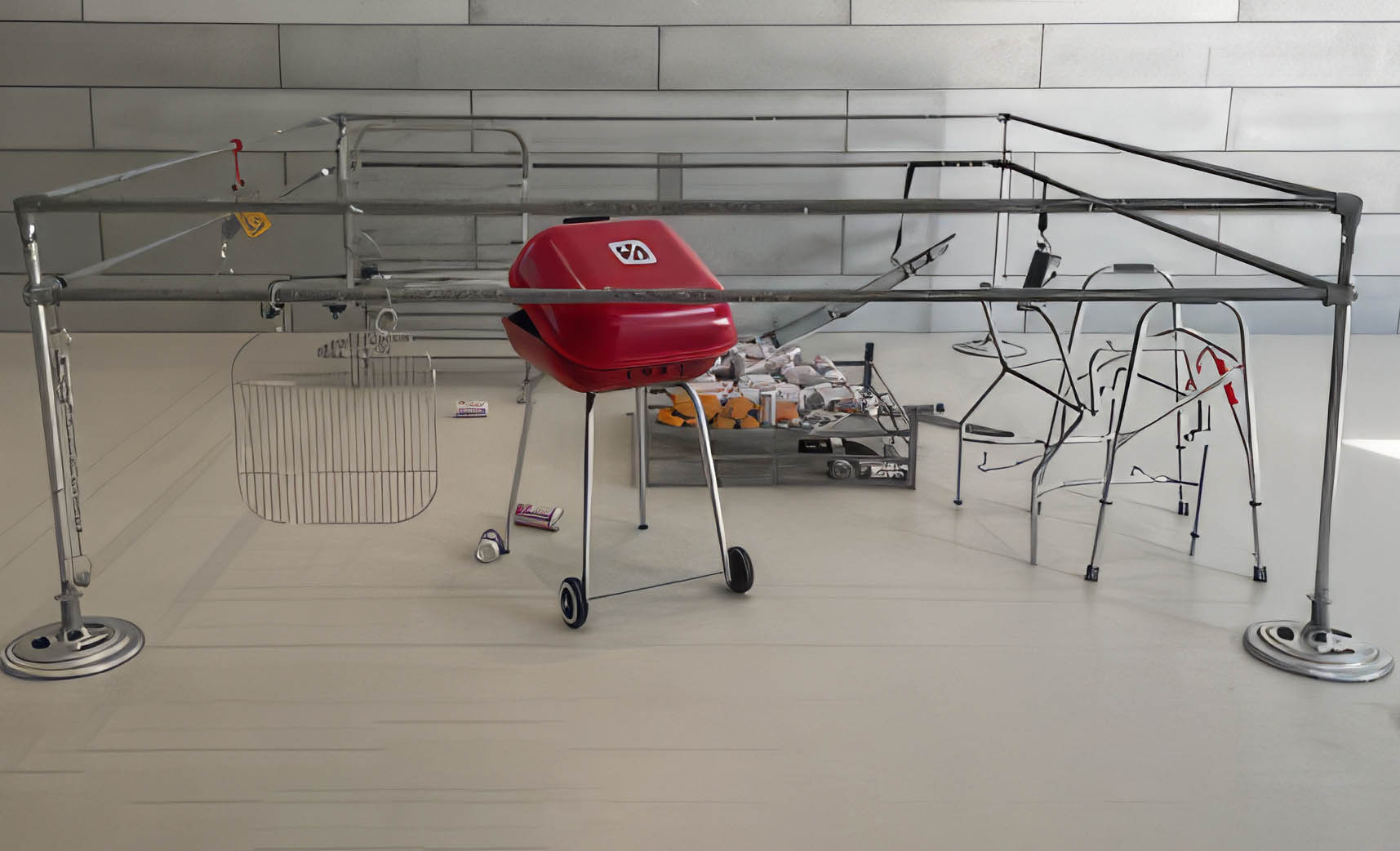
What Is Cady Noland Known For
In the often glamour-fueled, high-profile world of contemporary art, few figures are as enigmatic and provocative as Cady Noland. Described by many as a mythic recluse, Noland’s impact on American art has been thunderous, despite her deliberate withdrawal from the limelight. Her sculptures, installations, and assemblages are haunting mirrors reflecting the dark undercurrents of American culture: violence, celebrity, consumerism, and the breakdown of identity. Her works are visceral, often disturbing, and deeply critical. But what makes Noland truly compelling is not just what she creates, it’s how she wields absence, silence, and refusal as extensions of her practice.
The Allure and Mystery of Cady Noland
Born in 1956 in Washington, D.C., Cady Noland is the daughter of abstract painter Kenneth Noland. But her trajectory deviated sharply from her father’s color field painting. Instead, Cady Noland became a critical sculptor and conceptual artist, constructing a body of work that dissected the American psyche with surgical precision. While her career seemed to peak in the late 1980s and early 1990s, she remains one of the most expensive and controversial living female artists, even while actively resisting the art world machine.
Her withdrawal has only increased the mystique around her. She has refused exhibitions, disavowed works, and declined interviews for decades. But her absence does not equate to obscurity; rather, it amplifies her influence.
Cady Noland is primarily known for her sculptural assemblages, made from materials such as metal fencing, beer cans, handcuffs, American flags, newsprint, and other symbols of consumerism and violence. These materials aren’t simply aesthetic choices, they’re critical commentaries on American iconography and societal decay.
Her works often reflect themes like:
The fetishization of violence
The cult of celebrity
Mental illness and institutional failure
The commodification of trauma
The illusion of freedom in American life
A strong undercurrent in her art is the American dream gone sour. She juxtaposes the gloss of consumer goods with gritty, raw symbols of oppression, mobility scooters, metal barricades, and tabloid imagery. The work doesn’t offer comfort; it accuses.
How Does Cady Noland Make Her Artwork?
Noland’s artistic process is deeply conceptual. She doesn’t merely build sculptures; she curates social fragments into installations that resemble forensic exhibits of American dysfunction. Her approach often involves:
Found Objects: Much like the Dadaists and later Pop artists, Noland recontextualizes common items. But unlike Andy Warhol, who glamorized pop culture, Noland scrutinizes and dissects it.
Assemblage and Installation: She arranges materials in ways that simulate institutional settings, prisons, hospitals, crime scenes. The spatial configurations are not random; they often emulate control systems or barriers.
Image Transfer and Appropriation: Some works incorporate newspaper clippings or tabloid photographs, including notorious criminals or American icons. She questions not only the events but the media’s portrayal of them.
Destruction and Absence: She has disavowed or “withdrawn” several of her artworks post-sale, sometimes citing alterations made without her consent. These acts themselves have become part of her evolving artistic statement.
What Is Cady Noland’s Famous Sculpture?
While Noland has produced relatively few pieces, some have become icons of postmodern sculpture:
1. This Piece Has No Title Yet (1989)
This towering installation uses metal barricades, rubber tubing, and American flags. It evokes both protest and prison, celebration and suppression. It is a masterwork of ambivalence, reflecting the contradictory nature of American patriotism and control.
2. Oozewald (1989)
One of her most controversial and expensive works, Oozewald features a life-size image of Lee Harvey Oswald (Kennedy’s assassin) with his head blown out, covered in bullet holes and surrounded by American iconography. It sold for $6.6 million in 2011, setting a record for a living female artist at the time.
3. Clip-On Man (1989)
In this work, a figure is restrained by prosthetic-looking braces and clip-on devices. It evokes themes of disability, control, and depersonalization, echoing the mental and physical toll of institutional life in America.
4. Patty Hearst Series
Noland has also produced several works centered around Patty Hearst, the heiress kidnapped and radicalized in the 1970s. The infamous image of Hearst with a machine gun becomes, in Noland’s hands, a commentary on media spectacle, violence, and identity fragmentation.
How Many Artworks Does Cady Noland Have?
The exact number of sculptures by Cady Noland is difficult to quantify, but her entire known oeuvre is considered quite limited, possibly under 100 major works.
Several factors contribute to this scarcity:
She ceased producing new work in the mid-1990s.
She has disavowed a number of her pieces, effectively removing them from the public domain.
She often uses ephemeral or fragile materials, which aren’t always preserved.
She is extremely selective about how and where her work is displayed.
Because of this, owning a Noland work is rare, and comes with intense scrutiny. The rarity of her works contributes significantly to their high market value.
How Much Does Cady Noland Sculpture Cost?
Cady Noland’s work is among the most expensive by any living female artist. Her market is volatile, controversial, and highly watched. Some major prices include:
“Oozewald” (1989) – Sold for $6.6 million at Sotheby’s in 2011, setting a record for the highest price ever paid for a living female artist at that time.
“This Piece Has No Title Yet” (1989) – Estimated between $2 million to $4 million, although specific sale prices are often private.
Even smaller sculptures or photo assemblages can command high six or seven figures, depending on provenance and exhibition history.
It’s important to note: Noland has litigated or objected to sales or alterations of her works. In 2014, she famously disavowed a piece, “Cowboys Milking,” after it was restored without her consent, highlighting her strict control over authenticity.
What Art Style Is Cady Noland Associated With?
Cady Noland is most often associated with Post-Minimalism, Appropriation Art, and Conceptual Art. Her work has also been described as Neo-Conceptualism and Institutional Critique.
Key Elements of Her Style:
Post-Minimalism: While she uses minimal materials (metal, fencing, modular components), the emotional impact is far from minimal. Her work deals with trauma, confinement, and collapse of identity.
Appropriation Art: Like Barbara Kruger or Richard Prince, Noland uses existing images (news photos, icons) to subvert cultural meanings.
Institutional Critique: Noland examines not only American culture, but the institution of art itself. Her refusal to participate in the traditional artist-gallery-collector pipeline is itself a radical gesture.
What Materials Does Cady Noland Use?
Noland’s materials are integral to her conceptual critique. They are raw, industrial, and utilitarian, tools of authority, surveillance, and suppression. Common materials include:
Metal fencing and barricades: Evoking prisons, protests, and crowd control.
Aluminum and steel tubing: Used in mobility aids or medical equipment.
Handcuffs and restraints: Literal symbols of control and dehumanization.
American flags: Often shredded, wrapped, or juxtaposed with violent imagery.
Beer cans (especially Budweiser): Used to comment on addiction and male identity.
Newspaper clippings: Appropriated images of criminals, celebrities, and scandals.
Mobility scooters and prosthetics: Referencing aging, disability, or social dependency.
Her work is often compared to junk sculpture, but it’s anything but random, it’s surgical in its selection and placement of objects to critique cultural illness.
Where Is Cady Noland’s Sculptures Located?
Because of her limited output and strict control, Noland’s artworks are scattered across a small number of public and private collections.
Public Institutions That Have Held or Displayed Her Work:
Whitney Museum of American Art (New York)
Museum of Modern Art (MoMA) (New York)
Guggenheim Museum
Walker Art Center (Minneapolis)
MoCA Los Angeles
Museum für Moderne Kunst (MMK), Frankfurt
Private Collections:
Many of her works are in private hands, and rarely shown publicly. These collectors often acquire her pieces at auction or via exclusive dealer relationships.
It’s worth noting that exhibiting Noland’s work can be risky, institutions have faced legal threats for displaying altered or unauthorized works. This has given her work an aura of danger and tension, even in institutional settings.
Cady Noland Legacy and Final Thoughts
Cady Noland is not merely an artist; she is a phenomenon, a ghost in the machine of American capitalism and culture. Her refusal to play by the rules has become part of her myth. In a world obsessed with visibility, Noland has chosen invisibility as power. Her refusal to produce, to be interviewed, or even to authenticate her own work is not obstinacy, it is a radical art practice in itself.
In her silence, Noland has forced the art world to confront its own machinery: commodification, authorship, and the politics of image. Her art doesn’t comfort, it disturbs. It doesn’t resolve, it accuses. And in doing so, it continues to speak louder than most.
Cady Noland reminds us that sometimes, the most profound artistic statement is withdrawal. In her absence, she has become a presence impossible to ignore.




